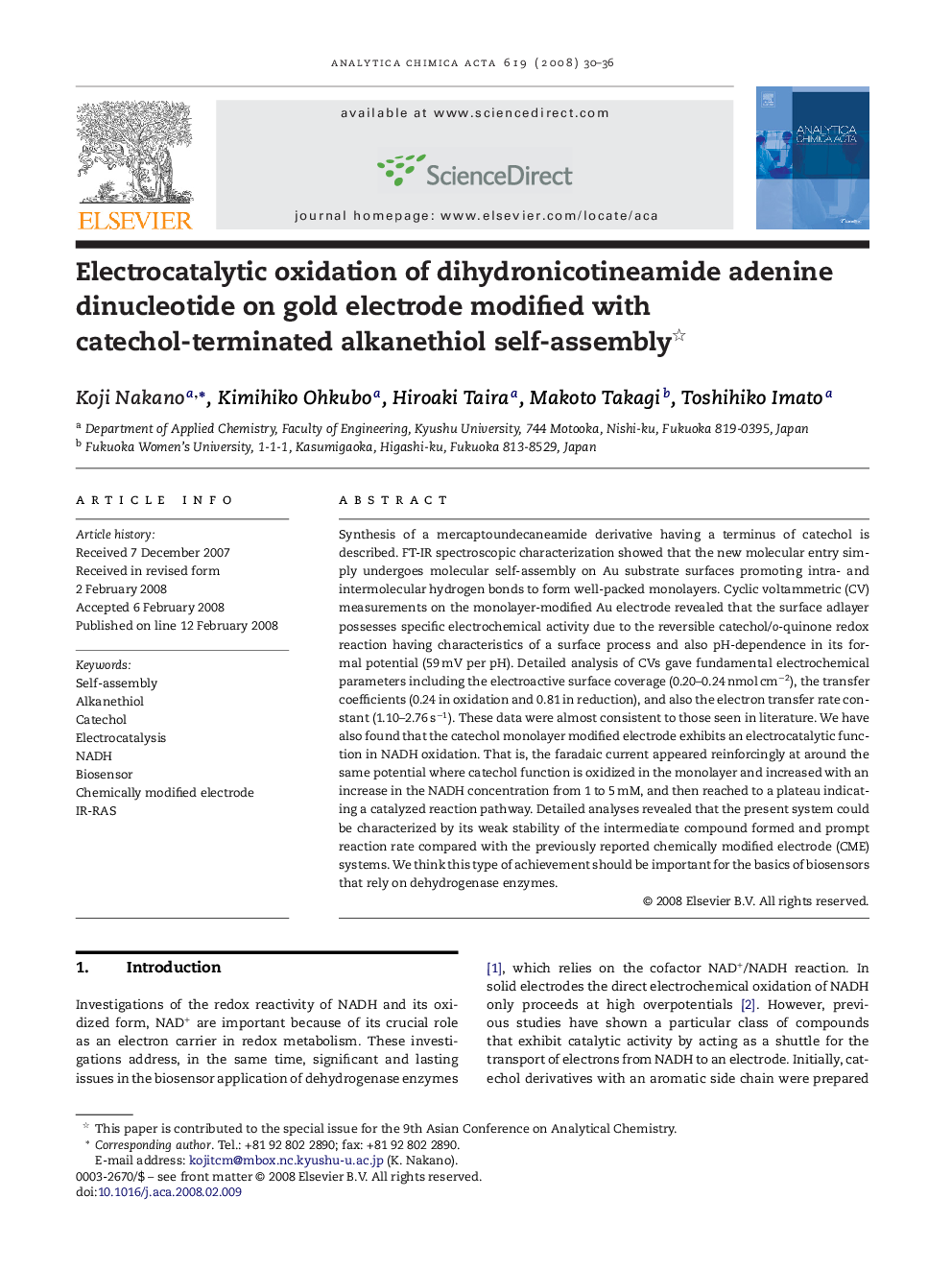| Article ID | Journal | Published Year | Pages | File Type |
|---|---|---|---|---|
| 1169490 | Analytica Chimica Acta | 2008 | 7 Pages |
Synthesis of a mercaptoundecaneamide derivative having a terminus of catechol is described. FT-IR spectroscopic characterization showed that the new molecular entry simply undergoes molecular self-assembly on Au substrate surfaces promoting intra- and intermolecular hydrogen bonds to form well-packed monolayers. Cyclic voltammetric (CV) measurements on the monolayer-modified Au electrode revealed that the surface adlayer possesses specific electrochemical activity due to the reversible catechol/o-quinone redox reaction having characteristics of a surface process and also pH-dependence in its formal potential (59 mV per pH). Detailed analysis of CVs gave fundamental electrochemical parameters including the electroactive surface coverage (0.20–0.24 nmol cm−2), the transfer coefficients (0.24 in oxidation and 0.81 in reduction), and also the electron transfer rate constant (1.10–2.76 s−1). These data were almost consistent to those seen in literature. We have also found that the catechol monolayer modified electrode exhibits an electrocatalytic function in NADH oxidation. That is, the faradaic current appeared reinforcingly at around the same potential where catechol function is oxidized in the monolayer and increased with an increase in the NADH concentration from 1 to 5 mM, and then reached to a plateau indicating a catalyzed reaction pathway. Detailed analyses revealed that the present system could be characterized by its weak stability of the intermediate compound formed and prompt reaction rate compared with the previously reported chemically modified electrode (CME) systems. We think this type of achievement should be important for the basics of biosensors that rely on dehydrogenase enzymes.
